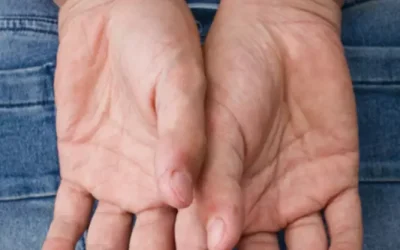However, opioid use disorders, including opioid addiction, are chronic medical conditions. Without treatment, a person may still experience mild withdrawal symptoms for months or years after stopping opioid use. In 2019, nearly 50,000 people in the United States died from opioid-involved overdoses.
Stage 2 Tolerance
Stressful events, loss of economic stability, and relationship issues can increase the risk of relapse. Opioid addiction is similar to other chronic relapsing conditions; signs and symptoms can be severe, and treatment adherence is often problematic. Opioid use disorder is a chronic disease of the brain—sometimes called an addiction—characterized by the persistent use of opioids despite harmful consequences caused by their use. Patients typically have both physical dependence and loss of control over their opioid use and may experience serious consequences related to their use. It is a relapsing disorder, which means that if people who have OUD stop using opioids, they are at increased risk of reverting to opioid use, even after years of abstinence. What’s more, these statistics don’t include the damage opioid misuse can inflict on people’s everyday lives, not to mention those of the people around them.
STRESS AND DRUG CRAVING
These questions are important and you might want to start with learning more about what addiction is. Anyone who takes opioids for a long time can become dependent even when they take them as prescribed. But dependence and tolerance aren’t necessarily the same as an “addiction” or a “use disorder.” If you think you are dependent on opioids, tell your doctor.

Related Health Topics
- If you need opioids for severe pain, work with your healthcare professional to take the lowest dose possible, for the shortest time needed, exactly as prescribed.
- Only one in five people who need treatment for drug use actually receive care, and only about half of those are given medication, experts say.
- At this stage, the drugs disrupt the signals in your brain that control your judgement and decision-making skills.
- Depending on the type of opioids you’ve been taking, you’ll likely need to stop taking opioids for at least 7 to 14 days before starting naltrexone.
- In the biggest agreements, states receive larger amounts by getting eligible local governments with populations over 10,000 to join the settlements.
Access to opioids is a particularly significant environmental risk factor. The availability and volume of prescription opioids, especially in North America, Western Europe and Australia, make them easier to access. Opioid use disorder is a chronic (lifelong) condition with serious potential consequences, including disability, overdoses, relapses and death.
People often use these words interchangeably, but use disorder is the term preferred by the American Psychiatric Society. If you’re regularly using opioids, your body will eventually adjust and depend on the drugs in order to function properly. Though everyone is different, your odds of becoming dependent go up the longer you take opioids.
- Talk with a doctor to find out what types of treatments are available in your area and what options are best for you and/or your loved one.
- Taking an opioid regularly increases the risk of becoming addicted.
- Sublingual tablets and films may also be combined with naloxone, a mu-opioid receptor antagonist.
All these types of treatments are very structured, and usually include several different kinds of counseling and behavioral therapies. The length of treatment for OUD should also be individualized for each patient. Some opioid addiction treatment clinicians attempt to discontinue medications for OUD after 1 year of treatment. Other clinicians suggest that treatment should be lifelong due to the risk of relapse and overdose death after patients stop treatment.
What led to the opioid crisis—and how to fix it – HSPH News
What led to the opioid crisis—and how to fix it.
Posted: Wed, 09 Feb 2022 08:00:00 GMT [source]
Naltrexone is given at 50 mg per day or up to 200 mg twice weekly. Opioid dependence and some of the most distressing opioid withdrawal symptoms stem from changes in another important brain system, involving an area at the base of the brain—the locus ceruleus (LC) (Figure 2). Neurons in the LC produce a chemical, noradrenaline (NA), and distribute it to other parts of the brain where it stimulates wakefulness, breathing, blood pressure, and general alertness, among other functions. When opioid molecules link to mu receptors on brain cells in the LC, they suppress the neurons’ release of NA, resulting in drowsiness, slowed respiration, low blood pressure—familiar effects of opioid intoxication. With repeated exposure to opioids, however, the LC neurons adjust by increasing their level of activity. Now, when opioids are present, their suppressive impact is offset by this heightened activity, with the result that roughly normal amounts of NA are released and the patient feels more or less normal.


